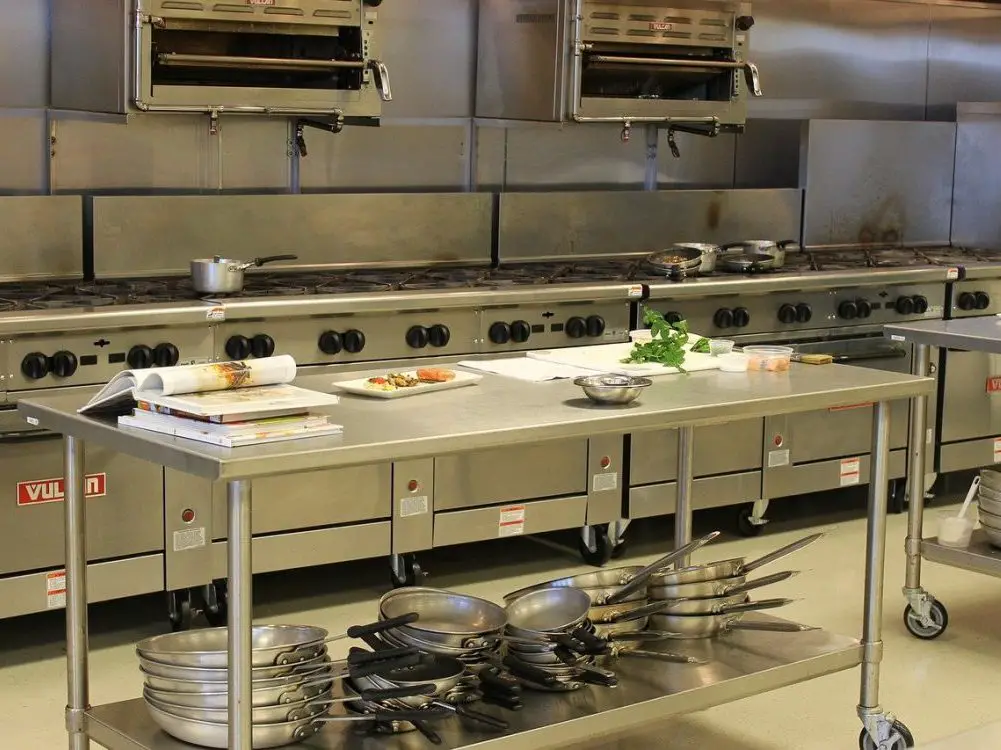As state governments across the country banned in-door dining, restaurants scrambled to find ways to stay in business. Many focused on digital expansion, turning their attention from traditional dine-in services to take-out orders and third-party delivery companies, like DoorDash, Grubhub and Uber Eats. To cope with the influx of to-go orders, some restaurant managers turned to ghost kitchens, raising the question of whether or not these facilities will become the future of restaurants.
Ghost kitchens are facilities shared by different restaurants, and they only fulfill delivery orders while the respective physical restaurant focuses completely on dine-in orders. Although the concept of a ghost kitchen and the popularity of delivery food existed before 2020, ghost kitchens have skyrocketed in popularity since the pandemic. Some businesses have taken this transition a step further, operating solely through their ghost kitchens and relying on delivery apps without having a physical store.
As more and more ghost kitchens are developed, delivery costs and time will go down. Euromonitor International, a market research firm, predicts that the ghost kitchen industry will be worth $1 trillion by 2030. If ghost kitchens are the future of the restaurant industry, it is important to explore both the pros and cons and the operations of such facilities.
The Pros and Cons of Ghost Kitchens
Ghost kitchens offer restaurants more opportunities to cut costs, reducing the often high price of opening a restaurant or fast-food chain. If they work with a ghost kitchen, restaurant managers do not need to hire staff to wait on customers or take their orders at the register. Such facilities can save money and have only a few employees working in the kitchen. Without a brick and mortar location, restaurants do not need to spend money on mortgages or spend time finding real estate in crowded, increasingly expensive cities.
Many ghost kitchens provide partner restaurants with all the necessary kitchen equipment, and they only ask for a percentage of the profits. Ghost kitchens are also a low-risk way to test new concepts in an area. If a company wanted to see how well their business would do in a new location, they could easily use a ghost kitchen.
The cost-efficiency of a ghost kitchen comes with new hurdles. Limited face to face communication could become a problem if a customer has a problem with their order. Customers would have to rely on the driver to communicate with kitchen staff. Another problem that digital restaurants will encounter is building their brand through social media and online advertising.
Restaurants that solely exist in delivery apps will need to spend time and money on digital marketing. They will also need to rely on these apps, which could leave them with less control over their product. Restaurants will have to cater their menu and packaging to items that should be eaten cold or hot, since some food items do not travel well.
Many Companies Are Jumping Into the New Industry
In the second half of 2019, DoorDash opened its first ghost kitchen in the Bay Area in California. Its facility houses five different fast-food chains and restaurants: Chick-fil-a, Halal Guys, Nation’s Giant Hamburger, Rooster & Rice and Humphry Slocombe. DoorDash provides its restaurants with all necessary kitchen facilities and customizes them to their specific needs.
Customers can either place a delivery order for a flat fee or pick it up themselves. In an area like the Bay Area, real estate can be quite expensive. Such facilities offer restaurateurs an easier way to test their concepts and build their brand. Although the ghost kitchen is doing very well in this new market, DoorDash has not released any plans for future ghost kitchens in other cities.
Wingstop is another fast-food chain that entered the ghost kitchen industry as a part of their plan to be 100% digital. Because of the pandemic, the company plans to turn all of its existing locations into delivery-only facilities. In June 2020, the chain opened its first kitchen in its hometown of Dallas. The kitchen space is less than 400 square feet, which is much smaller than its typical store.
Another company that is in this budding industry is Zuul, a New York City ghost kitchen company that launched in September 2019. The company first started operating in Soho and just recently secured additional funds to expand its services to other boroughs of New York. The Soho location houses nine kitchens and rents them out to chain companies like Sweetgreen and Junzi, a popular New York City Chinese restaurant. Before the pandemic, these restaurants decided to rent out ghost kitchens to focus on delivery orders because their physical locations couldn’t handle the influx of online orders.
Zuul’s website highlights the cost efficiency of partnering with them versus opening a traditional restaurant. Renting out kitchen space would cost $25,000 to $75,000, whereas opening a restaurant could cost well over $1 million. Launching a new restaurant under Zuul could take only three months, while a physical location could take nine months to a year. Staffing is decreased from 20 or more people to only four to eight people.
As the pandemic continues to leave the public in fear of infection, customers are turning to contact-less delivery apps and services. Ghost kitchens are slowly taking over the traditional dine-in industry with their flexible operations, menus and overall simplicity. This $1 trillion industry may very well be creating a new way for Americans to buy food on a day-to-day basis.
















